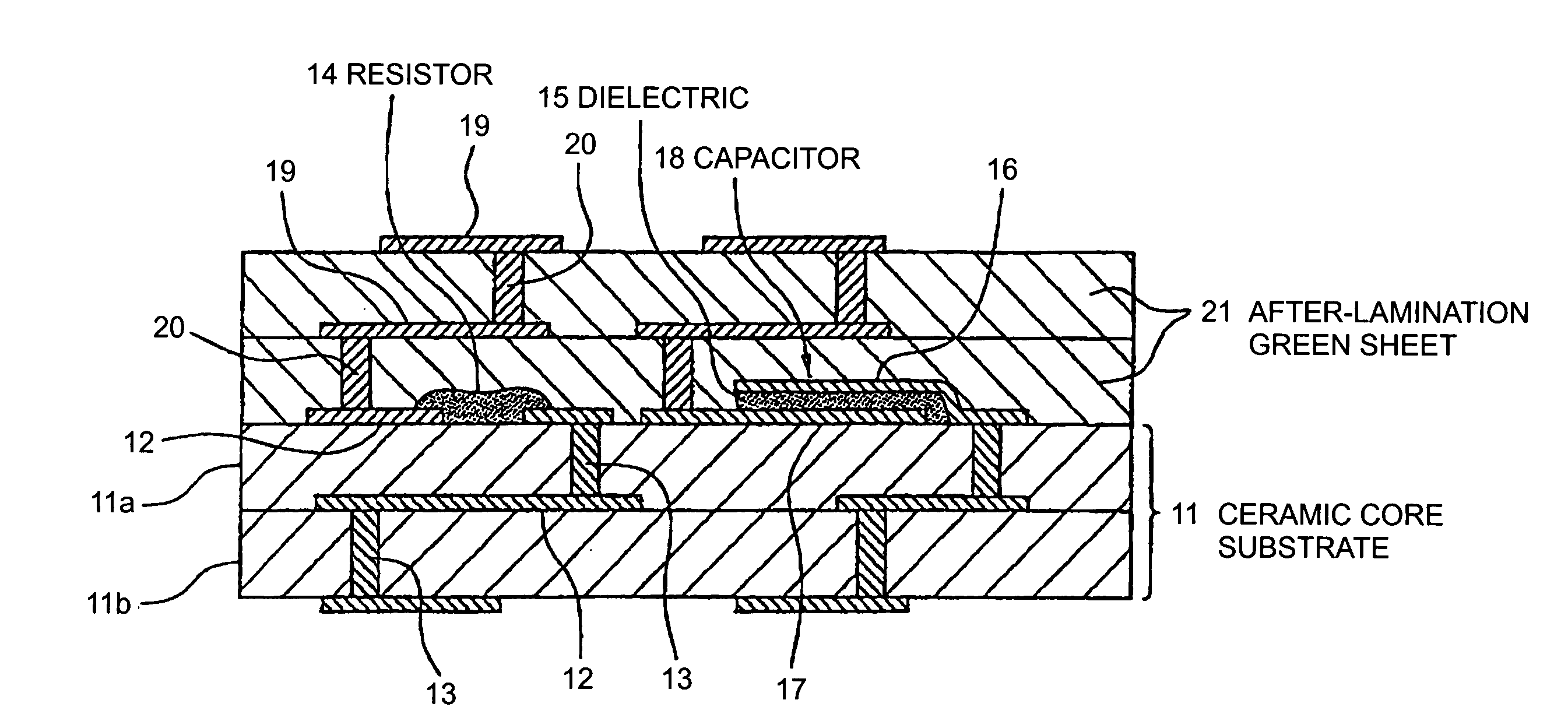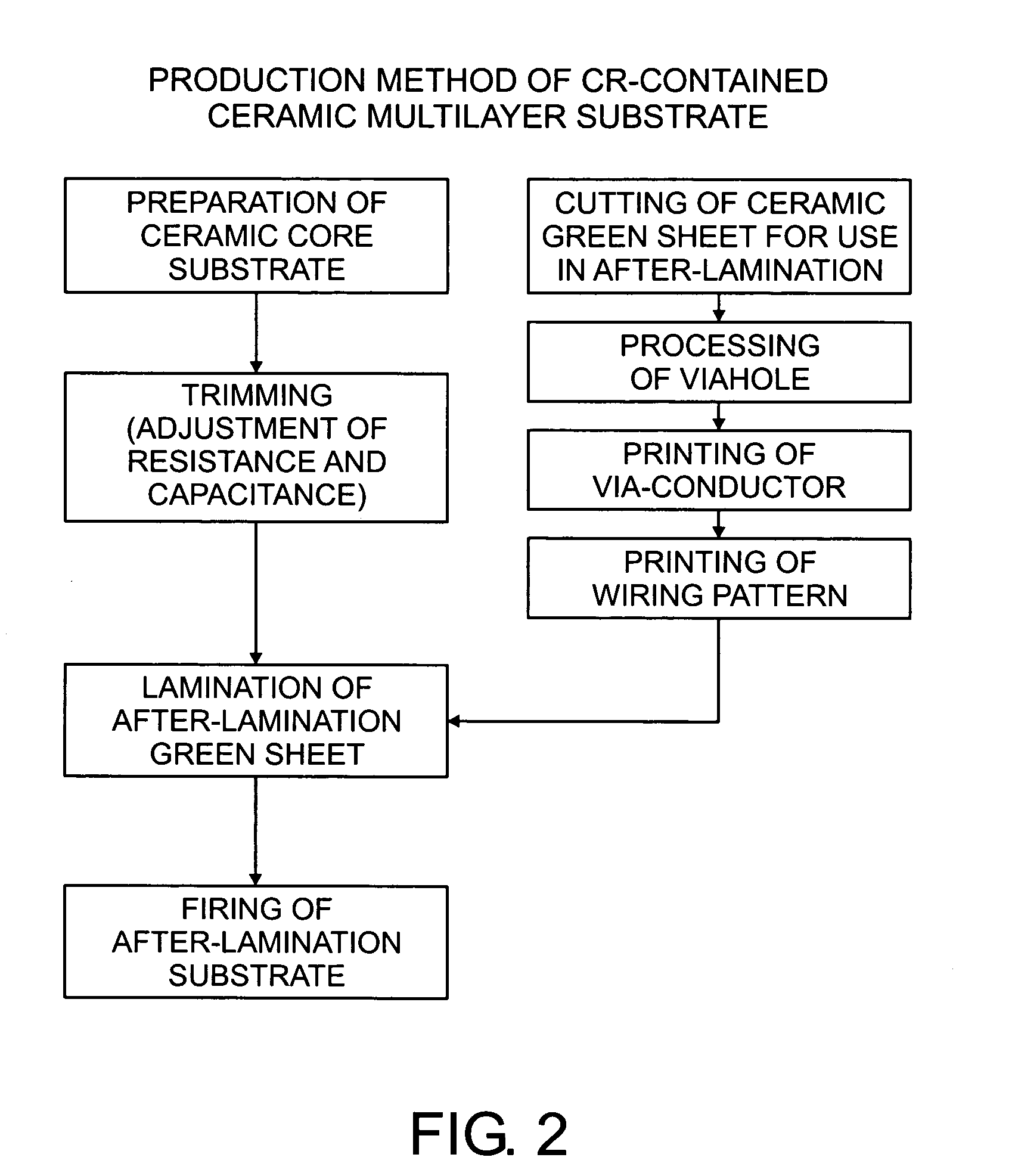Method of producing ceramic multilayer substrate
a multi-layer substrate and ceramic technology, applied in the direction of structural fixed capacitor combination, cell components, electrochemical generators, etc., can solve the problems of substrate deflection, cracking or distorted, and it is impossible according to this production method to adjust the resistance or capacitance of the resistor or capacitor
- Summary
- Abstract
- Description
- Claims
- Application Information
AI Technical Summary
Benefits of technology
Problems solved by technology
Method used
Image
Examples
Embodiment Construction
[0050] The inventors produced CR ceramic multilayer substrates according to the production method of this embodiment under different conditions. The variation of the resistance of the contained resistors and that of the capacitance of the contained capacitors were measured. Table 1 shows the measurements.
1TABLE 1 FiringFiring Material for temperature Materials for Material temperature for Dispersion of Dispersion of ceramic for ceramic contained Firing condition for for after- after- resistance of capacitance core core resistor and contained resistor lamination lamination contained of contained No. substrate substrate capacitor and capacitor green sheet substrate resistor capacitor Example 1 A1 900.degree. C. R1 Simultaneous firing A3 700.degree. C. .+-.0.2% -- 2 A1 900.degree. C. C1 After-firing A3 700.degree. C. -- .+-.0.1% 3 A1 900.degree. C. R1, C1 After-firing A3 700.degree. C. .+-.0.3% .+-.0.2% 4 A2 900.degree. C. R2 After-firing A3 700.degree. C. .+-.0.3% -- 5 A2 900.degree. ...
PUM
| Property | Measurement | Unit |
|---|---|---|
| temperature | aaaaa | aaaaa |
| temperature | aaaaa | aaaaa |
| temperature | aaaaa | aaaaa |
Abstract
Description
Claims
Application Information
 Login to View More
Login to View More - R&D
- Intellectual Property
- Life Sciences
- Materials
- Tech Scout
- Unparalleled Data Quality
- Higher Quality Content
- 60% Fewer Hallucinations
Browse by: Latest US Patents, China's latest patents, Technical Efficacy Thesaurus, Application Domain, Technology Topic, Popular Technical Reports.
© 2025 PatSnap. All rights reserved.Legal|Privacy policy|Modern Slavery Act Transparency Statement|Sitemap|About US| Contact US: help@patsnap.com



